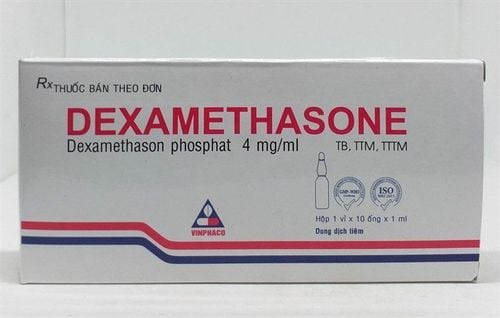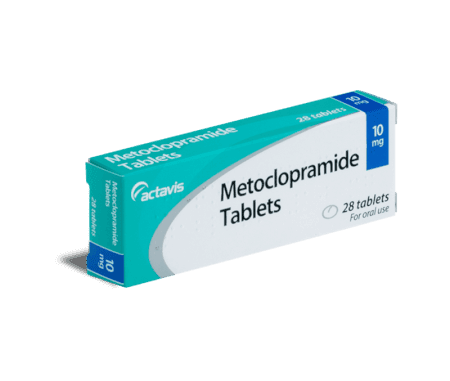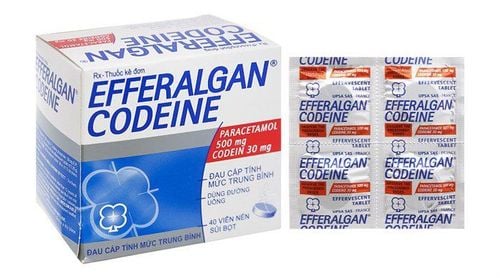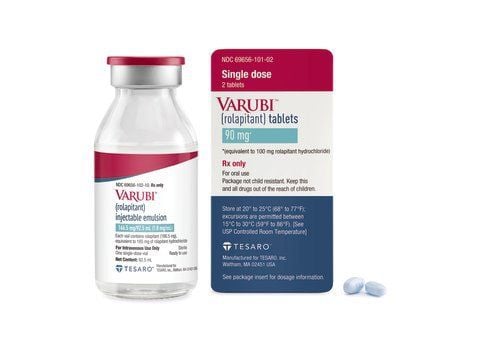This is an automatically translated article.
Ondanov is a drug that works to prevent and treat vomiting caused by treatment measures such as chemotherapy, after surgery. The drug is used for both adults and children, but children need special attention when used.1. What does Ondanov do?
Ondanov 4mg medicine has the main ingredient Ondansetron 4mg, excipients just 2ml and Ondanov 8mg has Ondansetron 8mg, excipients enough 4ml. Preparation of solution for injection.Ondansetron is an antiemetic for which the mechanism is currently unclear. It is a highly selective antagonist of 5-HT3. This drug is thought to help reduce the onset of the vomiting reflex due to the action of 5-HT3 on the vagus nerve during chemotherapy. In addition, the prevention of vagus nerve activation also helps to limit vomiting by a central mechanism.
This is a substance commonly used to prevent vomiting episodes during chemotherapy and radiation for cancer and vomiting after surgery. This drug does not cause Dopamine, so it does not cause extrapyramidal effects, nor does it change serum prolactin levels.
2. Indications and contraindications of the drug Ondanov
Indications: Ondanov is used to treat the following cases:Prevention and treatment of nausea and vomiting in adults due to chemotherapy or radiation therapy or after surgery. Management of radiotherapy-induced nausea in children over 6 months of age. Prevention and treatment of postoperative vomiting in children 1 month of age and older. Contraindications: Ondanov should not be used for the following subjects:
People with a history of allergy to Ondansetron or any of its ingredients. Hypersensitivity to any other 5-HT3 antagonist. Concomitant use of Apomorphine.
3. Usage and dosage of Ondanov
How to use: Ondanov is administered intravenously or intravenously after being diluted. Intravenous administration must be performed by medical personnel.Before using this drug can be diluted with solutions such as Nacl 0.9%, Glucose 5%, Mannitol 10%, Ringer Lactate.
Dosage:
Use chemotherapy to induce vomiting: 8mg slowly intravenously over at least 30 seconds immediately before chemotherapy. Chemotherapy induces vomiting: 8mg intravenously before chemotherapy. If a dose of 8 - 16 mg is used, it should be diluted with 50 - 100 ml of NaCl solution or other solvents, and injected over at least 15 minutes. Do not exceed 16mg at a time due to the risk of prolongation of the QT interval. Chemotherapy-induced vomiting in children 6 months of age and older: Calculate dose according to skin area: Intravenously at a dose of 5mg/m2 body immediately before chemotherapy. The intravenous dose should not exceed 8mg. The daily dose should not exceed 32mg. Then indicated for oral administration. By body weight: Intravenously at a dose of 0.15 mg/kg body weight immediately before chemotherapy. Two more doses may be given, each 4 hours apart. The total dose at one time should not exceed 8mg, the total daily dose should not exceed 32mg. After 12 hours indicated should be taken orally. Prevention of postoperative vomiting in adults: 4mg slow intravenous injection to initiate anesthesia. Treatment of postoperative nausea and vomiting in adults: Slow intravenous injection at a dose of 4mg. Prevention of postoperative vomiting in children over 1 month of age: Slow intravenous injection at a dose of 0.1mg/kg body weight, up to a maximum of 4mg before or at the time of induction of anesthesia. Treatment of postoperative vomiting in children 1 month of age and older: Intravenous injection slowly over at least 30 seconds, before or immediately after induction of anesthesia 0.1mg/kg body weight, up to a maximum of 4mg. Elderly people over 65 years old, people with renal failure: No need to adjust the dose. Patients with moderate and severe hepatic impairment: Do not take more than 8mg per day. Overdose:
Symptoms: When an overdose of the drug can lead to unwanted effects. The most common are visual disturbances, constipation, hypotension, prolongation of the QT interval,... Treatment: Currently, there is no specific antidote. Conduct symptomatic treatment and use supportive measures. Stop using this medicine and contact your doctor immediately if you have any unusual symptoms. During treatment should monitor the electrocardiogram.
4. Undesirable effects of the drug Ondanov
Possible side effects of the drug are as follows:Very common: Headache. Common: Sensation of heat, redness, pain at the injection site; constipation. Uncommon: Convulsions, dyskinesia; hypotension; hiccups; increased liver enzymes; arrhythmia, chest pain. Rare: Hypersensitivity reactions, severe may cause anaphylaxis; dizzy ; prolongation of the QT interval; visual disturbances, blurred vision. Very rare: Transient blindness; depression. If during the course of taking the drug, if you encounter any unusual symptoms, immediately report it to your doctor for timely treatment.
5. Things to pay attention to when taking Ondanov
This is a medicine to be taken under the prescription of a doctor. Short-term parenteral administration and oral conversion if possible. Special treatment should be taken if during treatment with the drug there are respiratory events that can lead to hypersensitivity reactions. May cause cross-sensitivity reactions in people with previous hypersensitivity to 5-HT3. A history of allergy to these drugs should therefore be taken into account. Drugs cause prolongation of the QT interval and this increases with dose administered. Caution should be exercised in dosing in high-risk individuals or those with a history of QT prolongation. Dosage adjustment is necessary in the presence of hypokalemia and hypomagnesaemia. Drugs that increase intestinal motility, need to be closely monitored when using the drug in people with subacute intestinal obstruction. Watch carefully in people who have tonsillectomy because bleeding may be masked. When used, it is necessary to closely monitor liver function in children taking Ondansetron with drugs that are toxic to the liver. Pregnant women: Because the safety of the drug has not been established. Animal studies have shown that Ondansetron is not harmful to pregnancy. But generally not recommended for this object. Consult your doctor before intending to use the drug. Nursing mothers: Ondansetron may pass into breast milk. Not recommended for this object.6. Drug interactions
Drug interactions have been found to be as followsDrugs causing QT prolongation: Further prolongation of the QT interval. Cardiotoxic drugs, antiarrhythmic drugs, Beta blockers, antibiotics: Increased risk of causing arrhythmias. Drugs acting on Serotonin: Causes Serotonin syndrome. Apomorphine: Marked drop in blood pressure, causing loss of consciousness. Phenytoin, Carbamazepine, Rifampicin : Decreased concentration of the drug Ondansetron. Tramadol: If combined, reduces the analgesic effect of Tramadol. Storage conditions: Store this medicine at a temperature not exceeding 30 degrees Celsius. Avoid moisture, avoid direct light on the medicine.
Hopefully, with the above information about the drug, you know how Ondanov works and what to keep in mind when taking it. This medication is to be used under the direction and supervision of a doctor. Therefore, it is safe to report any unusual symptoms immediately.













